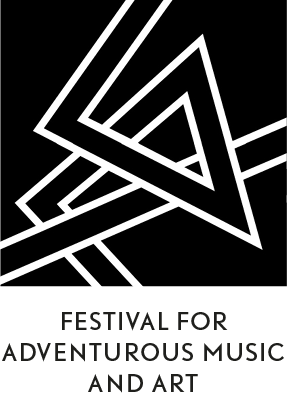Festival Editions

Sounds Like Kurenniemi
HAU2, Hallesches Ufer 32, 10963 Berlin → MapTickets: 15 / 11 € concessions
31
FriCTM 2014 pays homage to Finnish composer, designer, artist, technologist, and visionary Erkki Kurenniemi, whose work and ideas have set the stage for the development of electronic music in Finland. A pioneer of digital music technology, his synthesizers built in the 1970s are believed to represent the first completely digital synthesizers, with real-time capabilities, ever made. In collaboration with Helsinki’s Kiasma Museum and the electronic studio of the University of Helsinki, CTM 2014 presents a multi-part programme to shed light on the life and work of this idiosyncratic artist and inventor.
The Sounds Like Kurenniemi programme begins with three original sound pieces, first recorded on tape by the composer. “On-Off” was completed in 1963 at the Electronic Music Studio in Helsinki, a studio that Kurenniemi built himself. The 13-minute long wall of noise and distortion that is “On-Off” is believed to be inspired by the noise of a power plant’s generator hall. The piece, which remains his best-known composition to this day, was recorded in one take during a real-time performance in the University studio using a spring reverb unit, ring modulators, oscillators, tape echo, and manual tape stretching. "On-Off" shows clearly, that Kurenniemi's idea of the studio as a single musical instrument emerged already in the early stage of his career.
More refined, calm, and melodic, “Saharan uni I. Saharan uni” (1967) was produced in collaboration with Kari Hakala using Kurenniemi’s “Integrated Synthesizer” (developed in 1964), tape echo, reverberation, and filtering. Among Kurenniemi’s ususally rather harsh and distorted works this fragile and delicate piece stands out. "Saharan uni I" was mixed and completed with a four-track tape recorder in the studio of the Finnish Broadcasting Company YLE located in the Kulttuuritalo.
Kurenniemi used to record a test tape once he finished building a new instrument. This is the case also with his key work "Antropoidien tanssi" (Dance of the Anthropoids), except this time the instrument test tape didn’t end up in the archive but was released on an album introducing Finnish electronic and experimental music (Perspectives ’68 – Music in Finland, 1968, Love Records LRLP 4). Among the few recordings to be released on record during Kurenniemi's active time as a musician, the piece evokes associations with techno. Conceived via a mix of real-time performance and subsequent tape editing, an excerpt of the piece was also published in 1970 on the album Tombstone Valentine by Finnish prog-rock group Wigwam.
Following these sound diffusions, Mikko Ojanen, a musicologist specializing in Kurenniemi’s body of work, presents “Project QRZ”, which opens the tape sound library Kurenniemi was building at the Electronic Music Studio of the University of Helsinki. As part of the project, Ojanen, Tommi Keränen, and Swedish musician Carl Michael von Hausswolff will each perform their compositions created from Kurenniemi’s recordings.
Mika Vainio first played some of Erkki Kurenniemi’s instruments in the early 2000s, performing together with Kurenniemi himself and with fellow musicians CM von Hausswolff and Ilpo Väisänen. In his performance “DIMI when acting as A – leviathan”, Vainio explores the possibilities and characteristics of Kurenniemi’s DIMI-A synthesizer, which was built in the early 1970s and consists of two oscillators, octave dividers, digital attenuators, three modulators, and two analogue octave filter banks. Played by using two electronic pens, the original instrument is currently on display at the Erkki Kurenniemi exhibition in the Kiasma Museum in Helsinki. For his performance, Mika Vainio uses recordings of the instrument’s sound, captured last November when performing with it in Helsinki.
The programme closes with “Make A Baby”, a participatory performance by American group Lucky Dragons. Using a self-built instrument that transmits electronic currents to individual participants via cables, the instrument’s voltage is modulated by the varying levels of electric resistance of a person’s skin and the ever-changing electrical circuit as participants touch or create distance between one another. Closely related to the idea and technical principles of Erkki Kurenniiemi’s DIMI–S from 1971 – which he called the “Sexophone” – Lucky Dragons’ "Make A Baby" playfully challenges the social barriers of participants, who engage in a spontaneous communal musical process.
Presented in collaboration with Mikko Ojanen, Mika Taanila, and the Kiasma Museum for Contemporary Art in Helsinki.
Tommi Keränen[FI]
A practitioner of experimental electronic music since late 1990s, Helsinki-based producer and noise figurehead Tommi Keränen primarily works with live electronics and computers with customized software, creating multi-layered, engrossing amalgams of abstract sound.
Lucky Dragons[US]
The 'communal experiment' that is Lucky Dragons started as a 'band' in 1999 in San Francisco. Their concerts-as-workshop style happenings have generated considerable interest in both the art and music worlds.
Erkki Kurenniemi[FI]
Finnish inventor, engineer, filmmaker, nuclear physicist turned artist and technology pioneer of the 1960s, Erkki Kurenniemi is also a science popularizer, a futurologist, and an experimental film-maker. One of the great unsung pioneers of the electronic age, Erkki Kurrenniemi played a central role in the development of electronic music in Finland.
Carl Michael von Hausswolff[SE]
CM von Hausswolff is a composer, conceptual artist, and independent curator based in Stockholm and Palma de Mallorca, Spain. Since the end of the 1970s, Hausswolff has worked as a composer using sound recording devices as his main instrument, and as a conceptual visual artist working with performance art, light and sound installations, and photography.
Mika Vainio[FI]
Mika Vainio’s untimely passing shook the world of experimental electronic music, leaving behind a formidable legacy that continues to influence countless artists. As one half of the Finnish minimal electronic duo Pan Sonic with Ilpo Väisänen, Vainio helped bridge the worlds of drone, techno, and noise.
Mikko Ojanen[FI]
Mikko Ojanen works as a musician, sound technician and music producer with several pop groups and experimental ensembles. Ojanen also teaches at the University of Helsinki Electronic Music Studio. He is specialized in Finnish electro-acoustic music and the development of studio and music technology.

